flyfishinrock;743012 said:As spring is quickly moving in and so are the bugs, so over the last few weeks I have (slowly) been gathering info on predator insects and their prey. Originally for myself, I thought this info may help others so I will post it. All the pics and info in this collage was gathered from non-copyrighted material.
Beneficial insects crawl and fly a lot more than their prey. That means they receive more exposure to any pesticides that may be present in your growing environment. This is one reason hired bugs die from pesticide exposure so easily. It is VERY important your plants are pesticide free (1 month) prior to application of beneficial's. Soapy sprays are fine, and may help the beneficial's if the problem is severe.
GENERAL PEST CONTROLS:
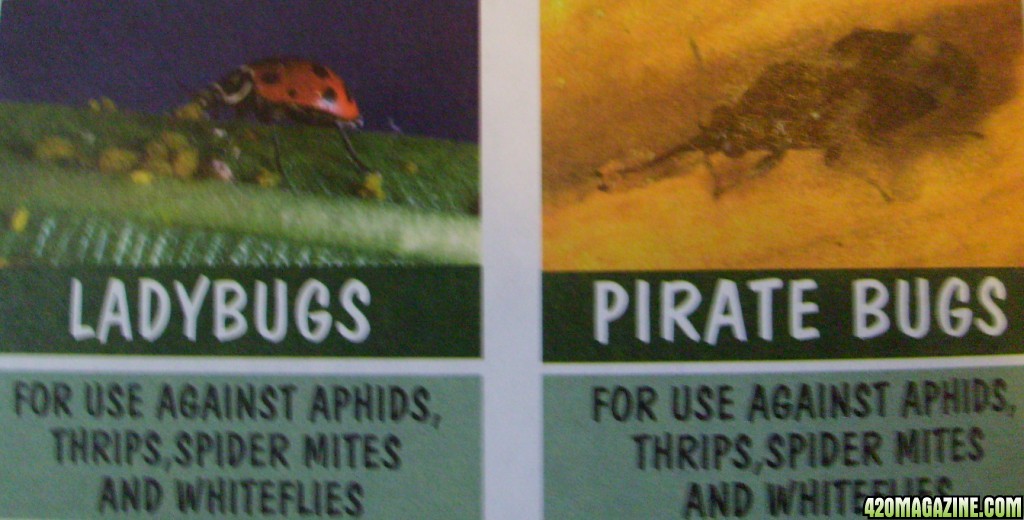
Ladybugs are a very common predator with a taste for aphids, but will eat most any soft bodied insect. Fast moving Ladybug Larvae look like alligators, and can consume about 400 aphids before becoming an adult; at which time they can consume over 5000 in a year. Pirate Bugs are a winged predator, with a huge beak to suck the juices from their prey. Pirate Bugs aren't finicky eaters, they will consume thripes, aphids, spider mites, whitely pupae, and any other soft bodied insect. Indoors, both insects should be released in the dark.
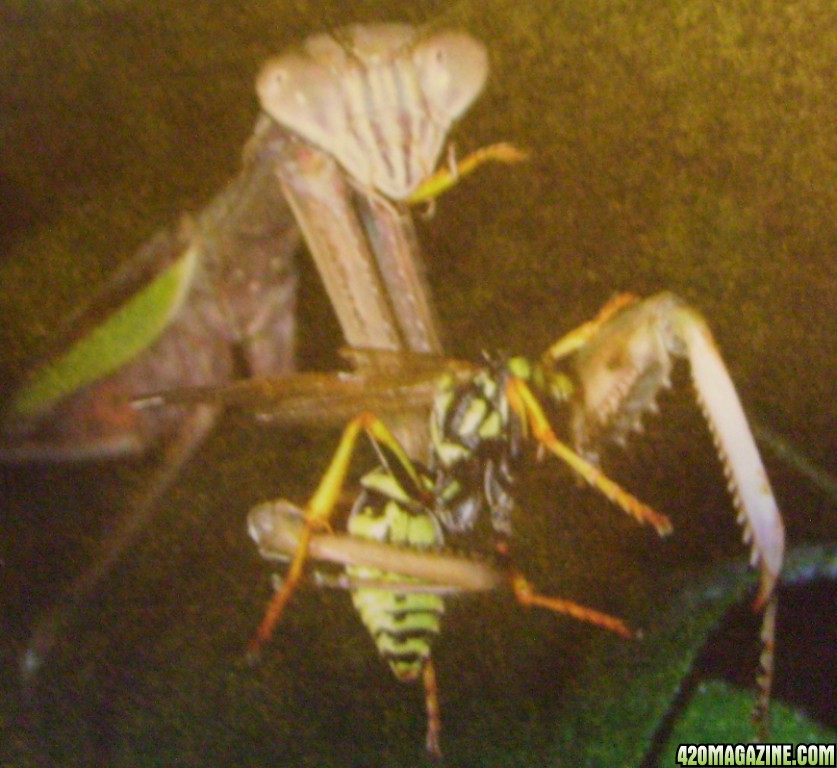
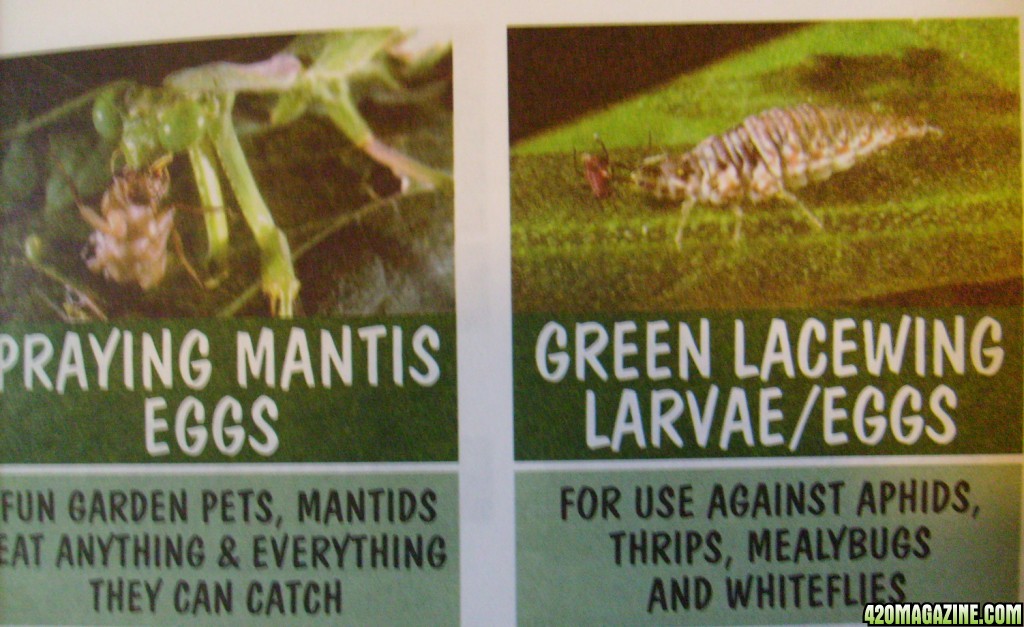
The Praying Mantis have a voracious appetite and are strictly carnivorous, they will eat almost any insect they can overcome. Kids also enjoy watching the eggs hatch as HUNDREDS emerge. Green Lacewing Larvae Look like tiny alligators and will also attack almost anything they can get ahold of with their pincer jaws. A single Lacewing Larvae will consume around 200 aphids or other soft bodied insect a week. Adults live 4-6 weeks. They will travel up to 100 feet for their first meal!
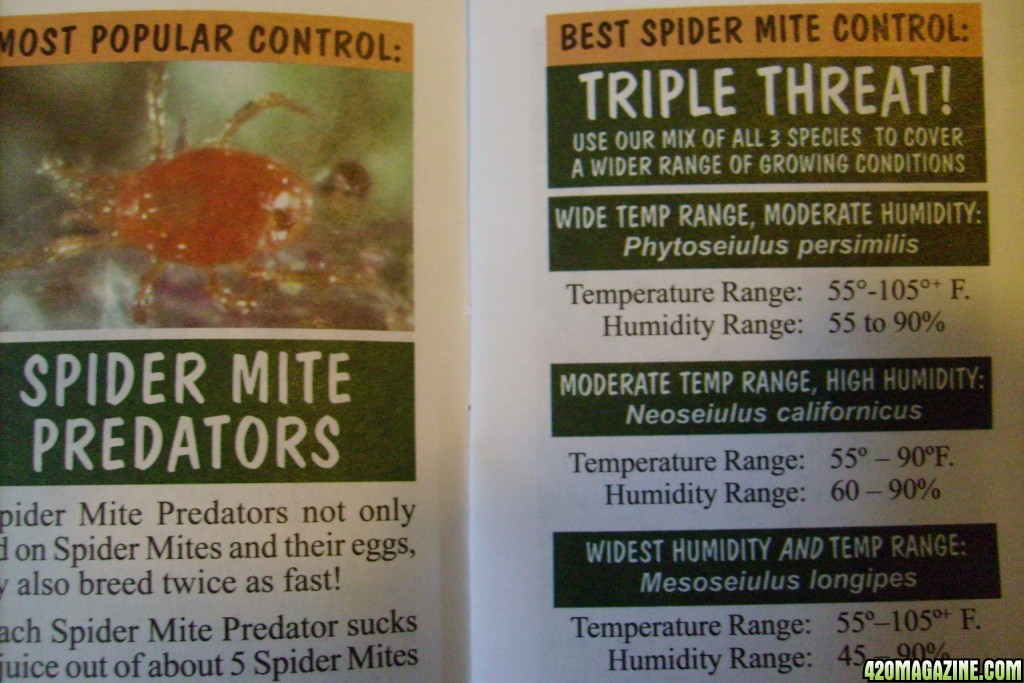
Spider mite Predators Breed about twice as fast as spider mites and consume 5 mites or 20 eggs daily. Stethorus punctillium efficiently eat all stages of spider mite, even the eggs. These insects will fly to find a colony and eat like a smorgasbord, consuming over 40 mites a day.
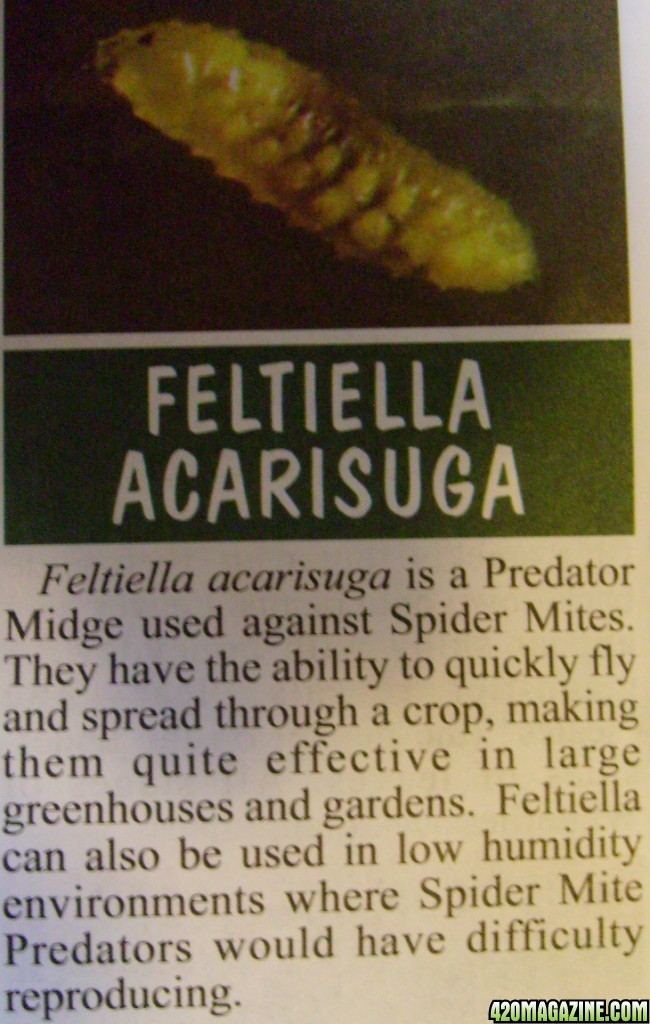
Remember spider mites have the ability to go dormant for months after the photo period shortens, then reemerge to lay eggs after the days lengthen again. This is one reason they are so hard to eradicate.
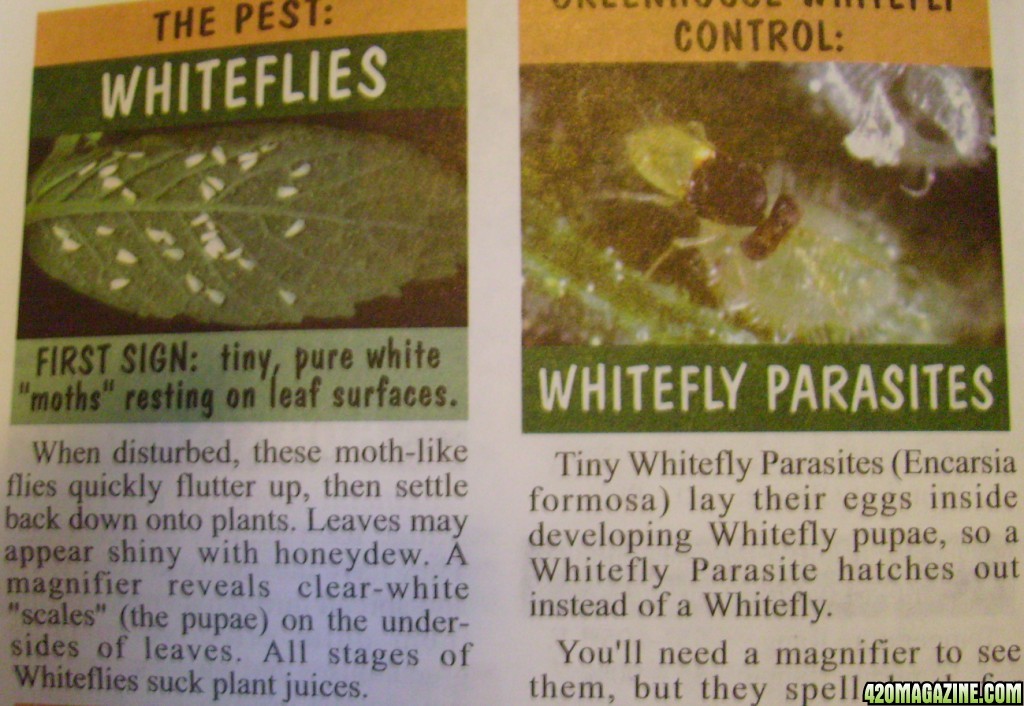
Also, Delphastus pusillus eat from 150-600 white fly eggs a day, taking about 30 seconds each; slightly longer to eat a larvae.
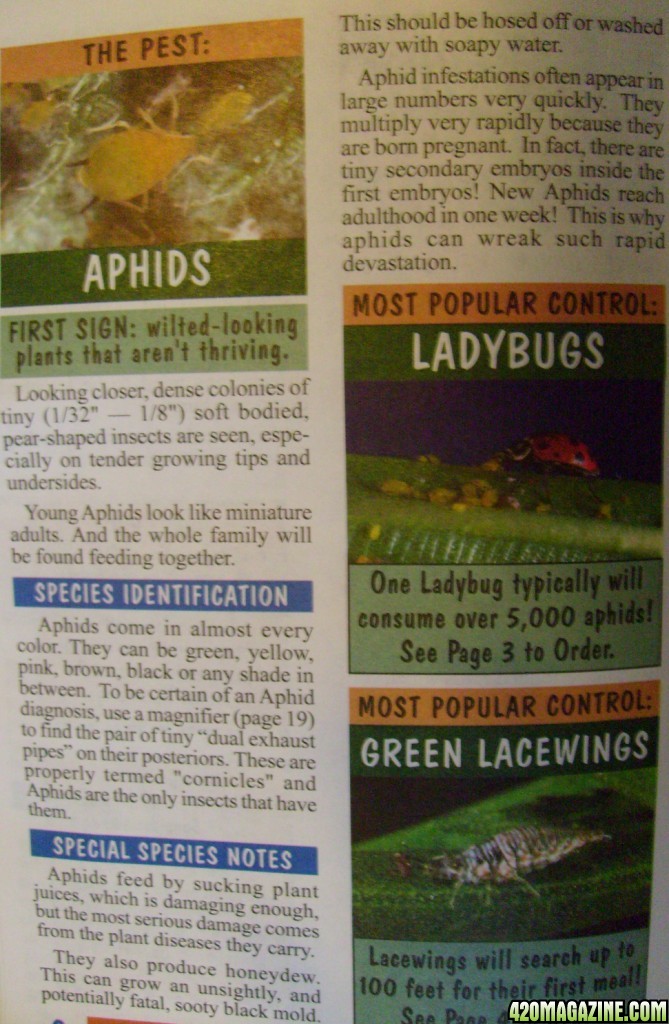
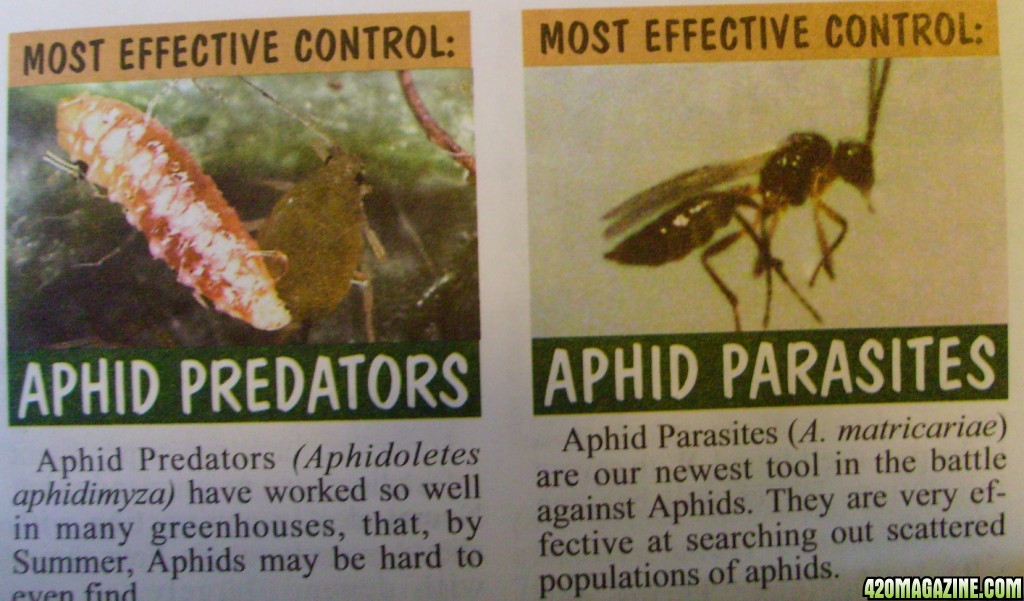
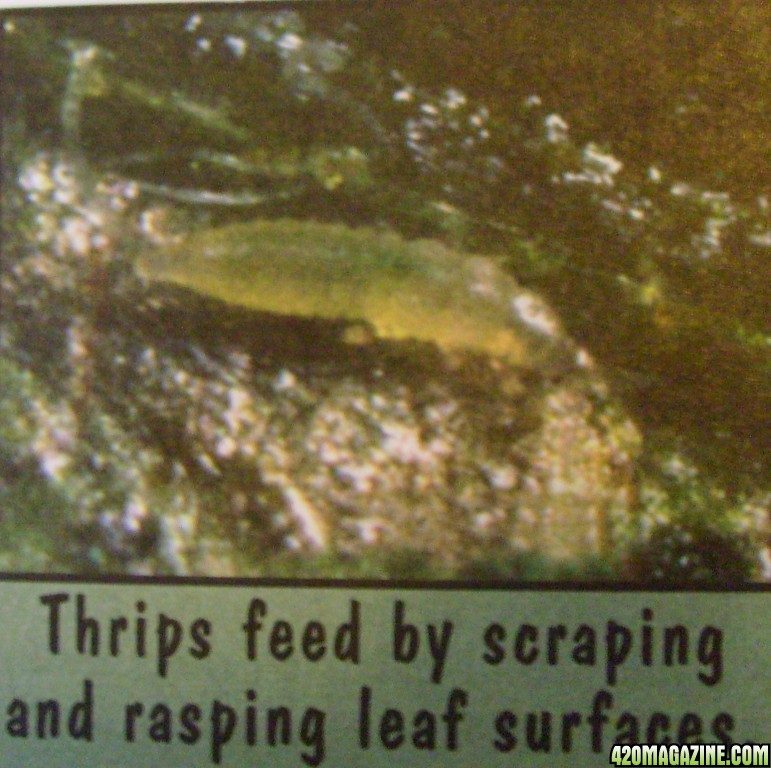
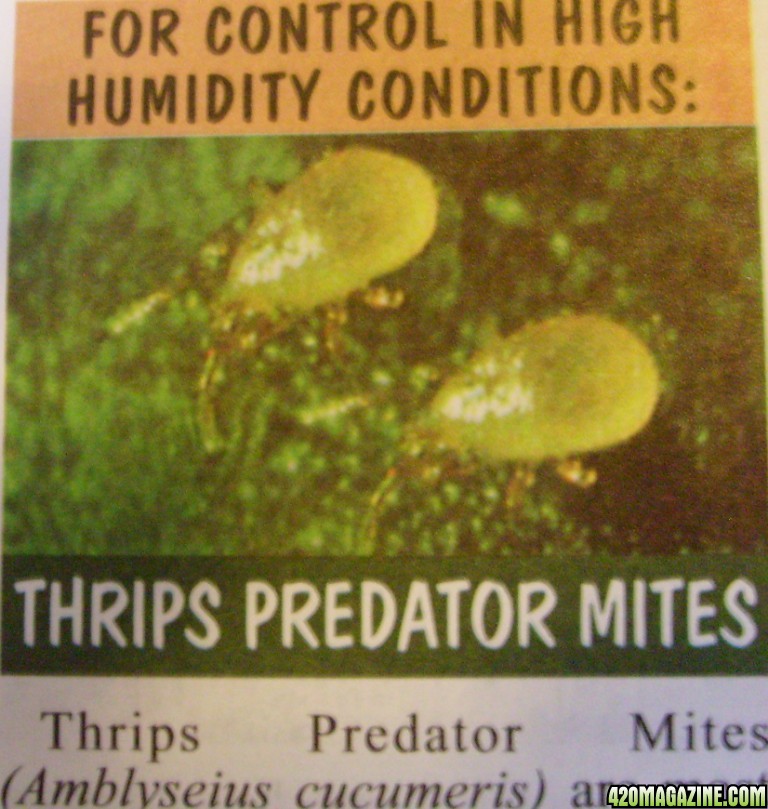
remember there are hundreds of color variations of thripes, but they all feed the same way.
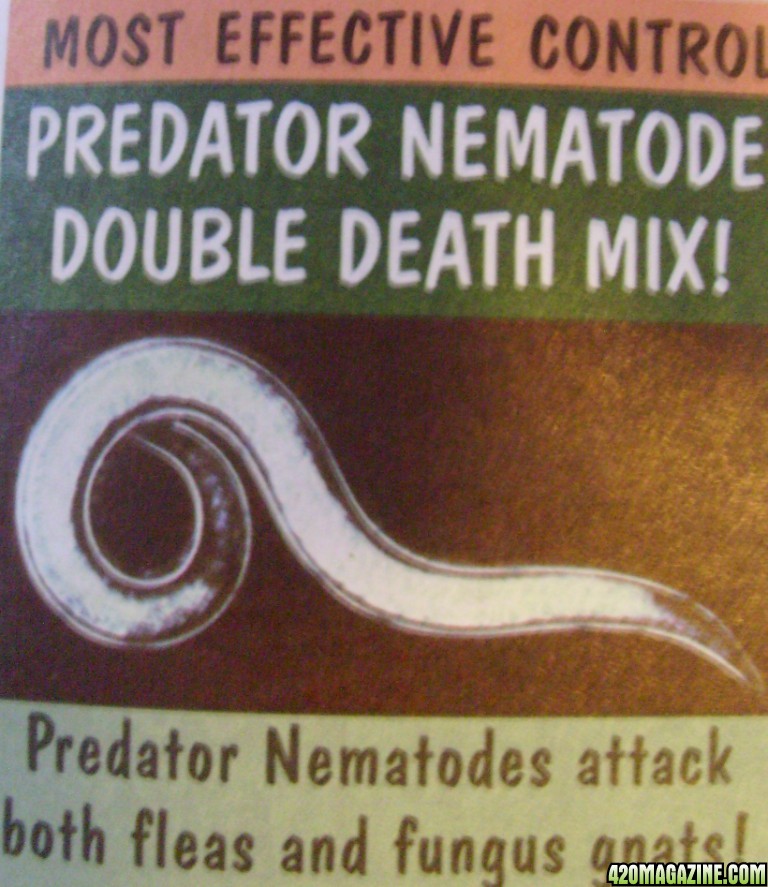
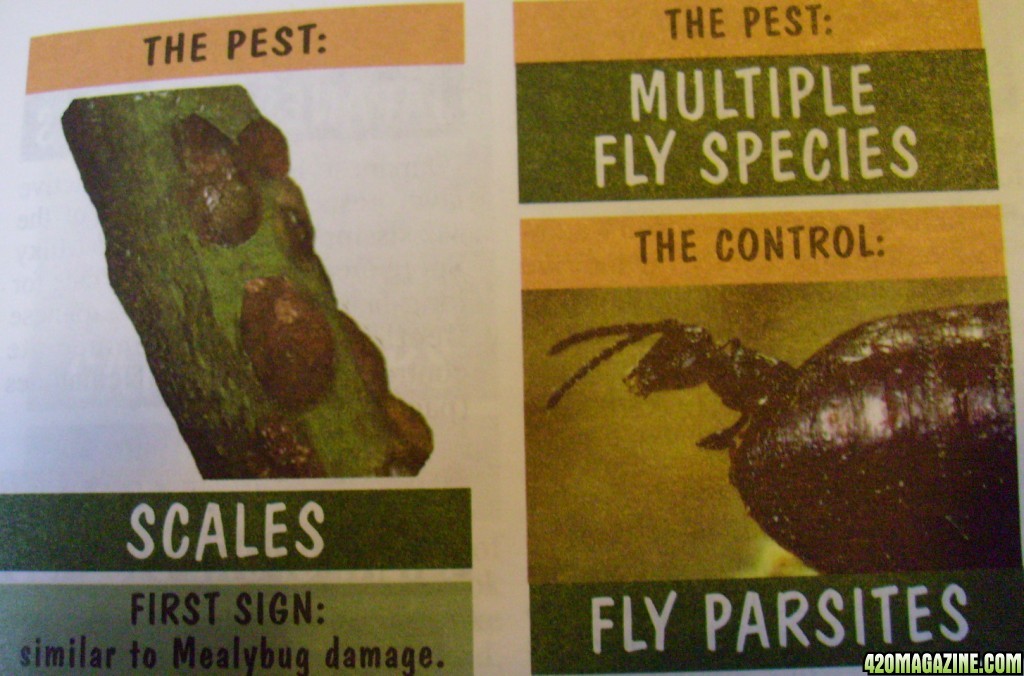
For scales use mealybug destroyers, Green Lacewings, Ladybugs, or Pirate Bugs. Dab some alcohol on whole colonies.
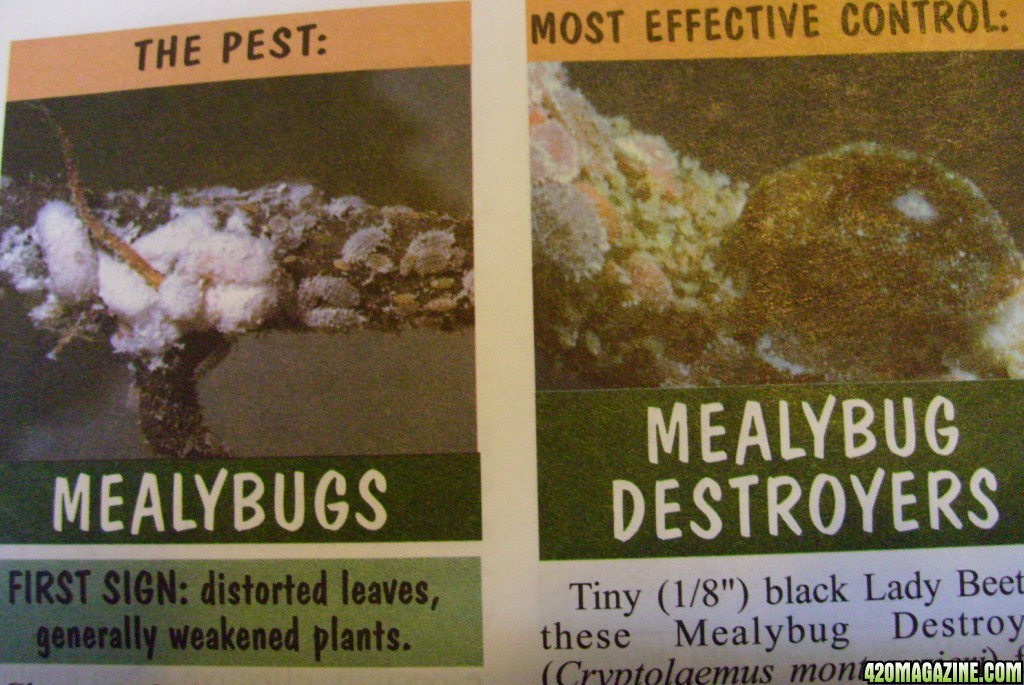
Mealybug destroyers also eat scale and aphids
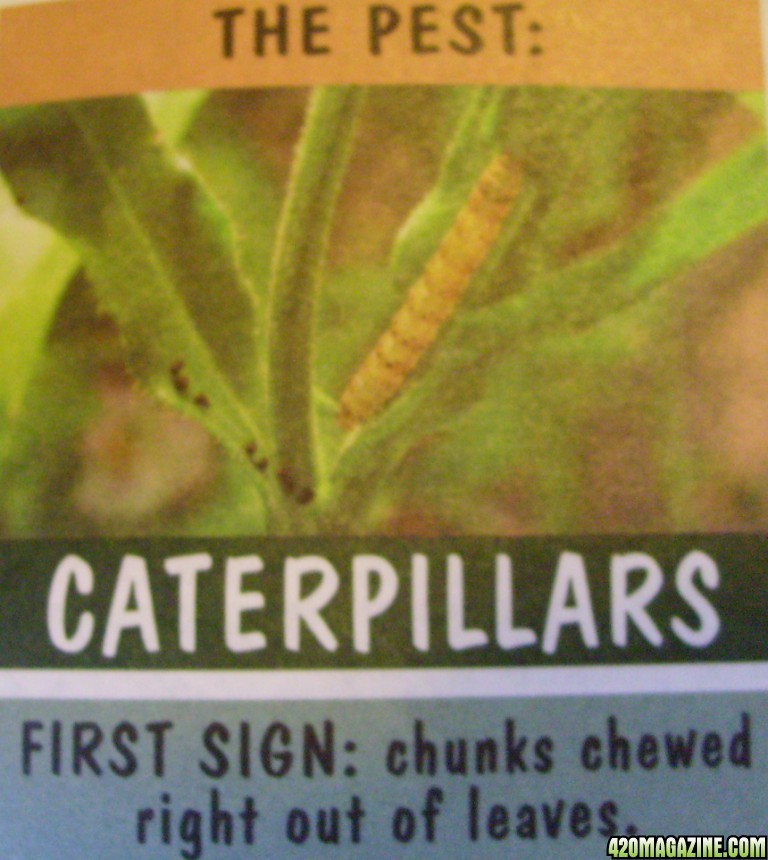
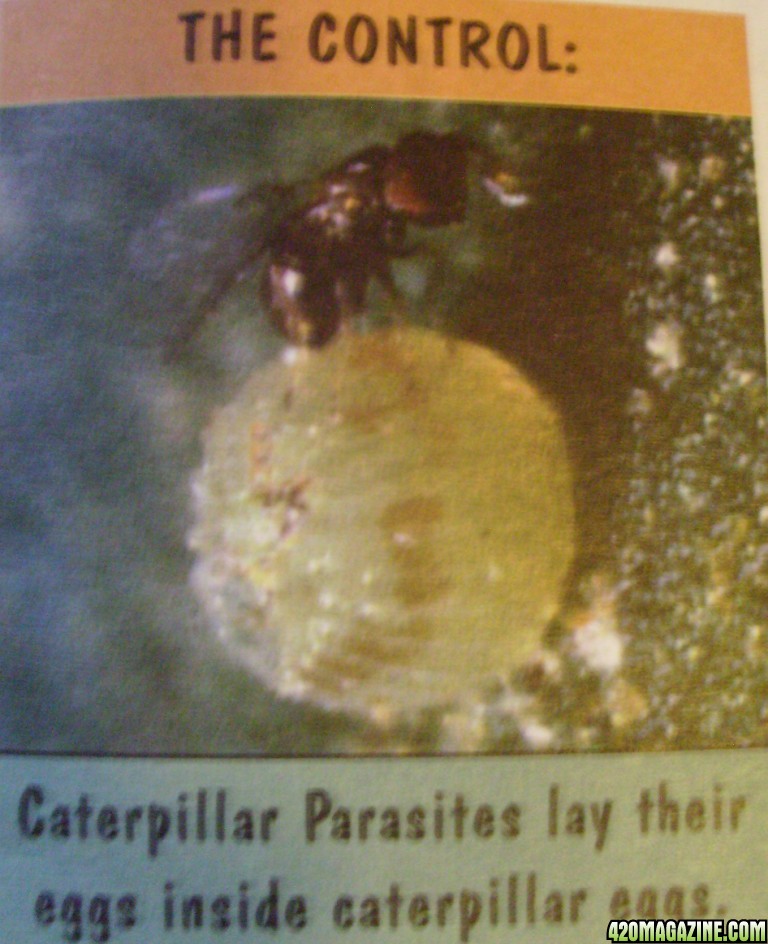
Trichogramma species control over 200 types of Butterfly and moth larvae.
I hope this can help someone out there to have a little better harvest, sorry bout the pic quality.
Navigation
Install the app
How to install the app on iOS
How To Use Progressive Web App aka PWA On 420 Magazine Forum
Note: This feature may not be available in some browsers.
More options
You are using an out of date browser. It may not display this or other websites correctly.
You should upgrade or use an alternative browser.
You should upgrade or use an alternative browser.
problem and beneficial insects Post from 2009
- Author Lady Cannafan
- Create date
Blog entry information
More entries in Member Blogs
-
Is Cannabis Market Transforming into a Fast-Moving Consumer Goods (FMCG) Sector?Traditionally, the global cannabis consumption market was viewed mainly as a raw material...
-
The Rise of Skate Vape: A New Design Trend in Cannabis ConsumptionAs the cannabis vaping market continues to evolve, new product trends are emerging that push the...
-
Why the Vape with Screen is Gaining Popularity in Cannabis?The cannabis vaporizer industry is evolving rapidly, and one trend that has gained significant...
-
How to Choose the Right Cannabis Vape with A Screen for YouAs the cannabis industry rapidly evolves, the competition among suppliers has intensified...
-
Why Are More Cannabis Brands Introducing Vapes with Screen Display?As the cannabis industry rapidly evolves, the competition among suppliers has intensified...
More entries from Lady Cannafan
-
The Cannabis Kitchen - THC/CBD Calculator Tool by Cannabis CheriI'm watched this free dosing cannabis edibles mini class by cannabischeri.com, and there were...


